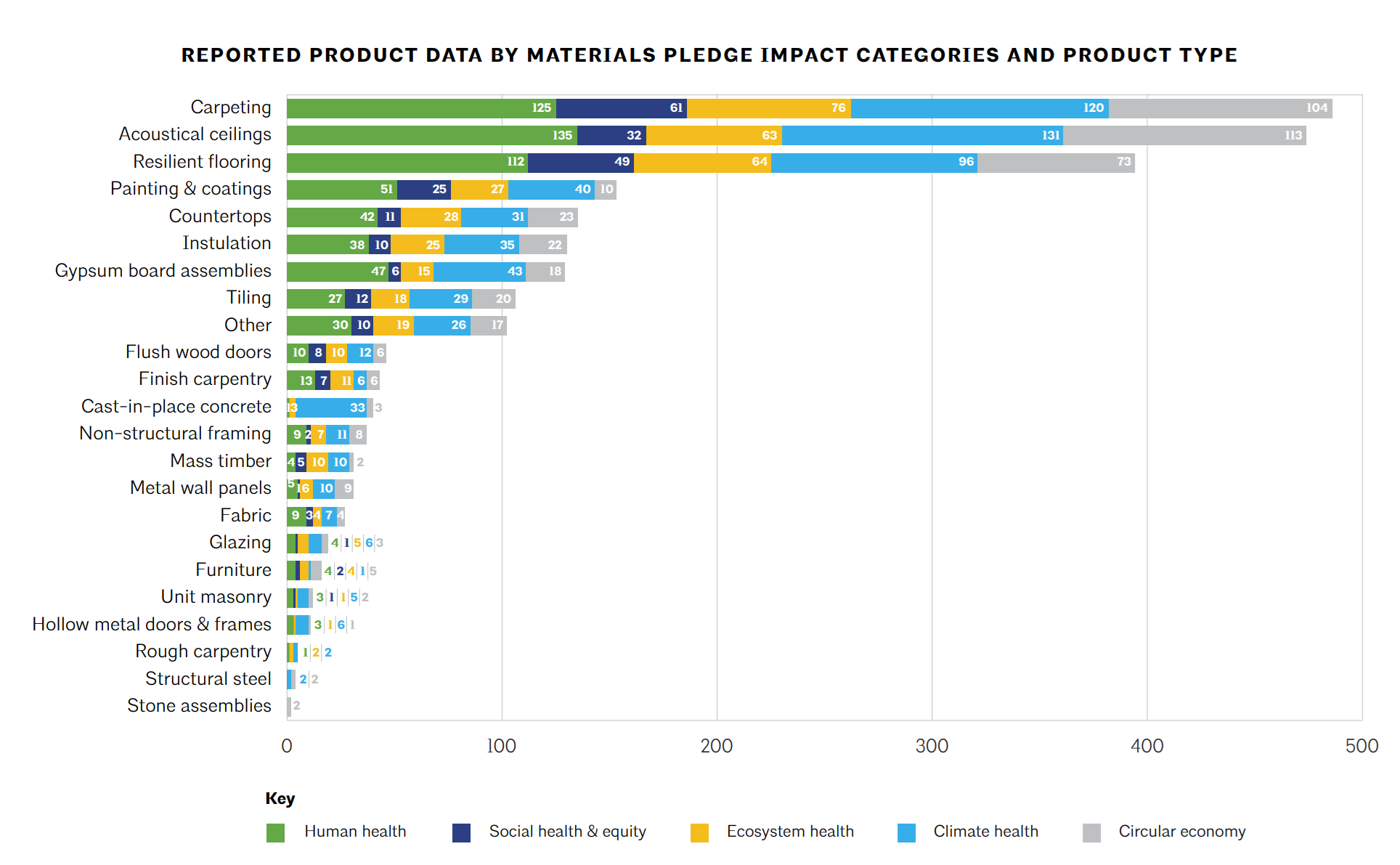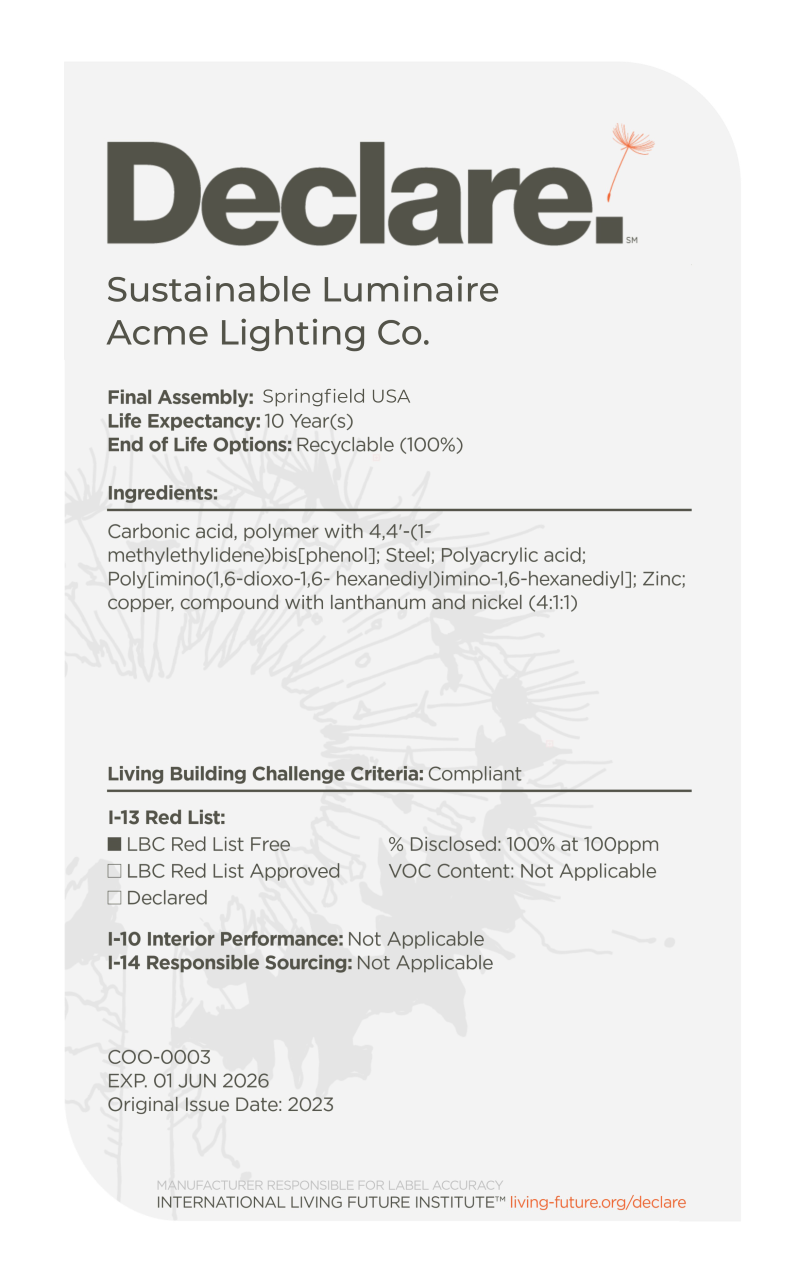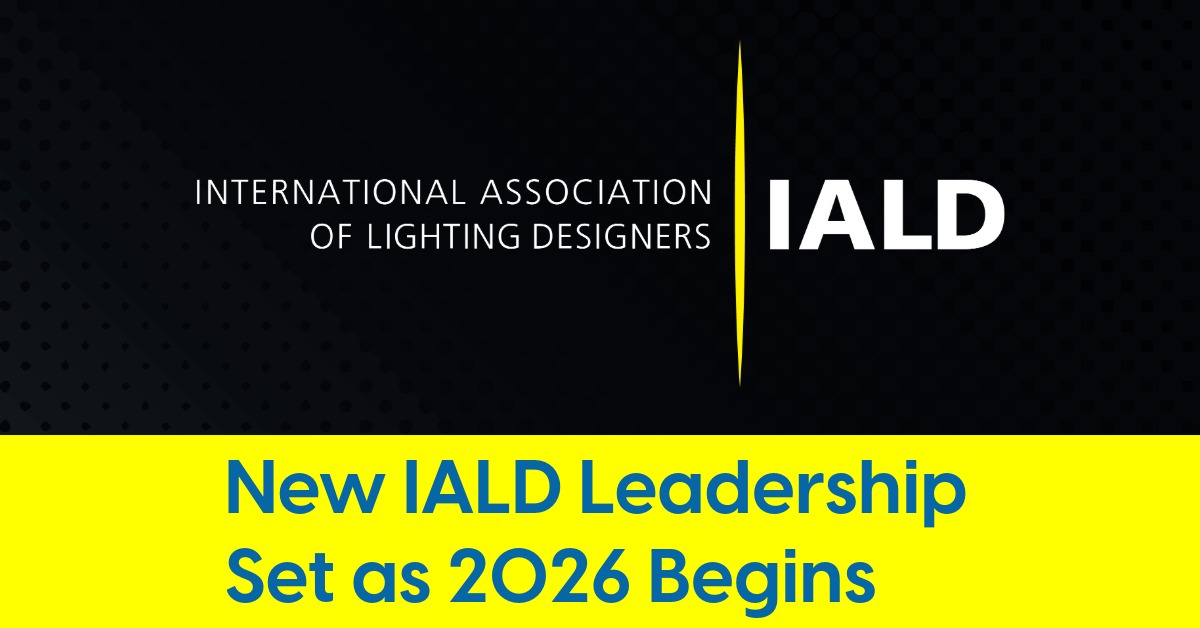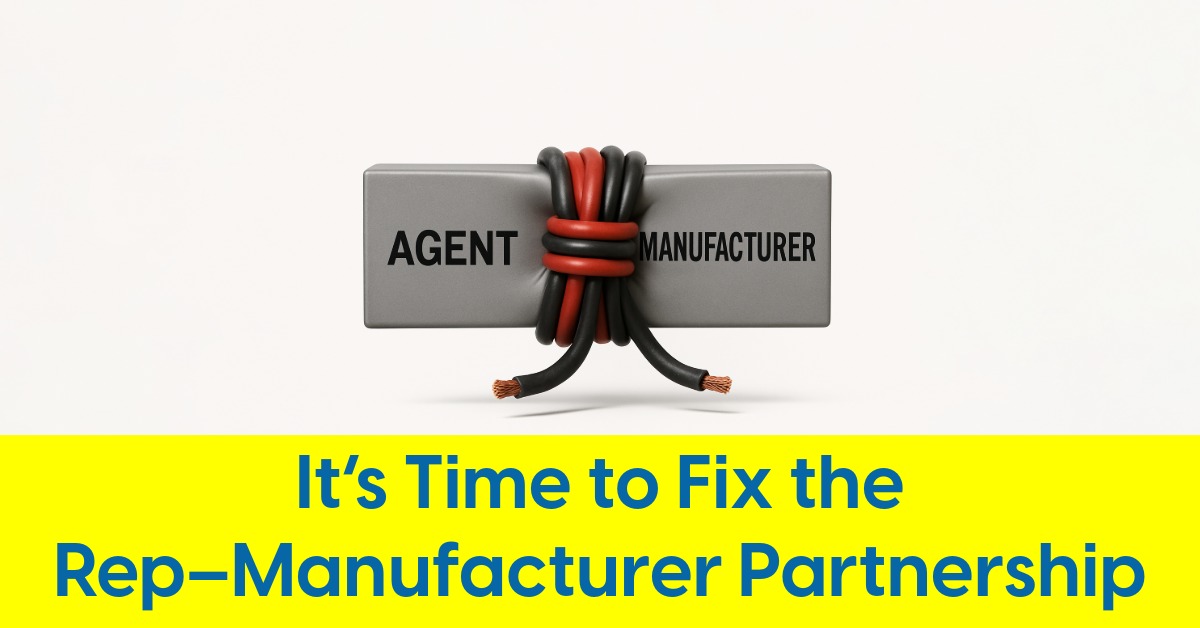November 19, 2025
Lighting’s Role in Material Transparency Often Overlooked 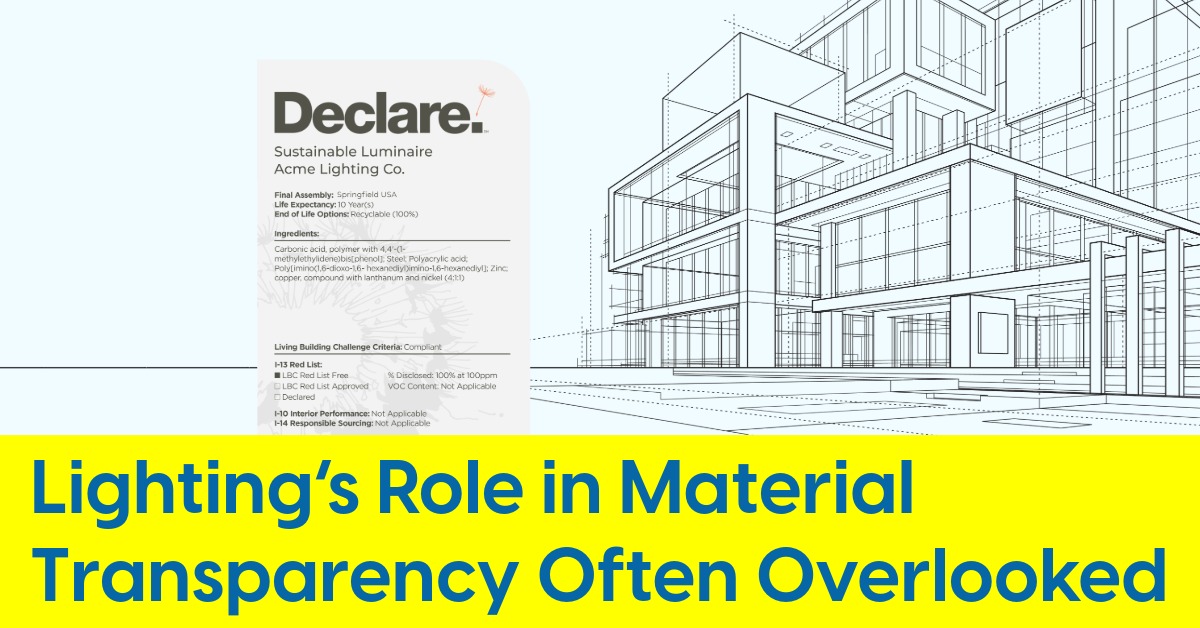
Declare labels grow, but visibility remains low compared to other building materials
Shift underway: "Specifier expectations are rising, manufacturers are responding and the baseline is shifting."
Lighting products barely appear in the American Institute of Architects’ newly released 2024 Materials Pledge Report. Acoustical ceilings, carpeting, and resilient flooring top the list of reported product types, each tallying hundreds of mentions across categories like human health, climate health, and circular economy. Lighting, meanwhile, is nowhere to be found — buried deep under the generic label “Other,” we believe.
The absence begs the question: Is lighting being overlooked by design firms pursuing material transparency? Is the lighting industry itself failing to show up? Or does lighting simply not move the sustainability needle enough to earn attention?
“It’s not that lighting doesn’t matter — it’s that it’s hard,” says Gean Tremaine, CEO of Connecticut-based QTL. “Lighting is simply late to the party, not irrelevant to it.”
Why the Big Categories Win Attention
The AIA Materials Pledge asks architectural firms to report product data across five impact categories — human health, social health and equity, ecosystem health, climate health, and circular economy. Participation in the reporting process grew this year, with 419 projects submitted by 86 firms. A substantial number included product-level data, but overwhelmingly focused on what architects touch most directly: finishes.
According to the AIA’s own breakdown, products like carpet, acoustical ceiling tiles, and resilient flooring dominate reporting. That makes intuitive sense. These are "flat goods" — products that are not only easier to track and evaluate but also represent massive volumes of materials in most commercial buildings. Floors, walls, and ceilings cover nearly every interior surface. Lighting fixtures, by contrast, occupy a smaller footprint by volume and are often specified by specialists other than the architect, like lighting designers or electrical engineers.
But that doesn’t mean lighting is absent from the sustainability conversation. More than 40 lighting manufacturers now have active Declare labels — ranging from heavyweight companies like Acuity, Signify, and LMPG to smaller, private companies like Prudential Lighting, Kirlin, and QTL, which alone has 25 Declare-labeled products and more on the way.
Structural Barriers: Complex Assemblies and Confusing Paths
A major challenge for lighting is structural: fixtures are rarely simple. They often involve complex assemblies with multiple materials, component suppliers, and configuration options. Producing comprehensive materials transparency documentation — such as Declare labels or Environmental Product Declarations (EPDs)—is simply more difficult and expensive for lighting manufacturers than it is for finish vendors.
“The reality is that lighting products are harder to report on,” Tremaine says. “Verifying every element demands time, people, and money … Around half of the motivation to choose sustainable materials comes directly from architectural firms,” Tremaine notes, “and we’re seeing the same push from lighting design firms. Many now prefer manufacturers who provide transparency documentation.”
Lighting’s Carbon Opportunity
While lighting may be underrepresented in material transparency declarations, it holds untapped potential in another area architects are watching closely: operational carbon.
“Architects are under intense pressure to reduce buildings’ operational carbon,” Tremaine says. “Lighting is one of the most direct and impactful levers they can pull.”
And yet, despite that influence, there’s no recognized lighting industry EPD standard—at least not yet. That absence has stunted adoption of comparative carbon data in the lighting space. QTL and other firms are working with the Green Light Alliance to fill that gap, but progress is still uneven.
“We’ve already published third-party verified EPDs for our top lines,” Tremaine says, “with three more planned before year end.”
The AIA report highlights this disconnect. Human health and climate health were the most frequently reported impact categories across product types. But in lighting, the data simply doesn’t exist in a consistent, accessible way. As a result, architects can’t compare lighting products the same way they do insulation or paint.
A Shift Is Underway
Tremaine is quick to note that the landscape is changing. As architects incorporate sustainability more deeply into specs and as firms integrate reporting requirements into Sustainability Action Plans, lighting is getting pulled into the fold. But this is a slow cultural and logistical shift, not an overnight transformation.
“There’s a baseline shifting,” he says. “Specifier expectations are rising, and manufacturers are responding.”
Lighting’s role in material transparency may be muted in the AIA’s 2024 report, but that’s not a verdict—it’s a snapshot. And like all snapshots, it reflects both where the light is shining and where the industry still needs to look more closely.
